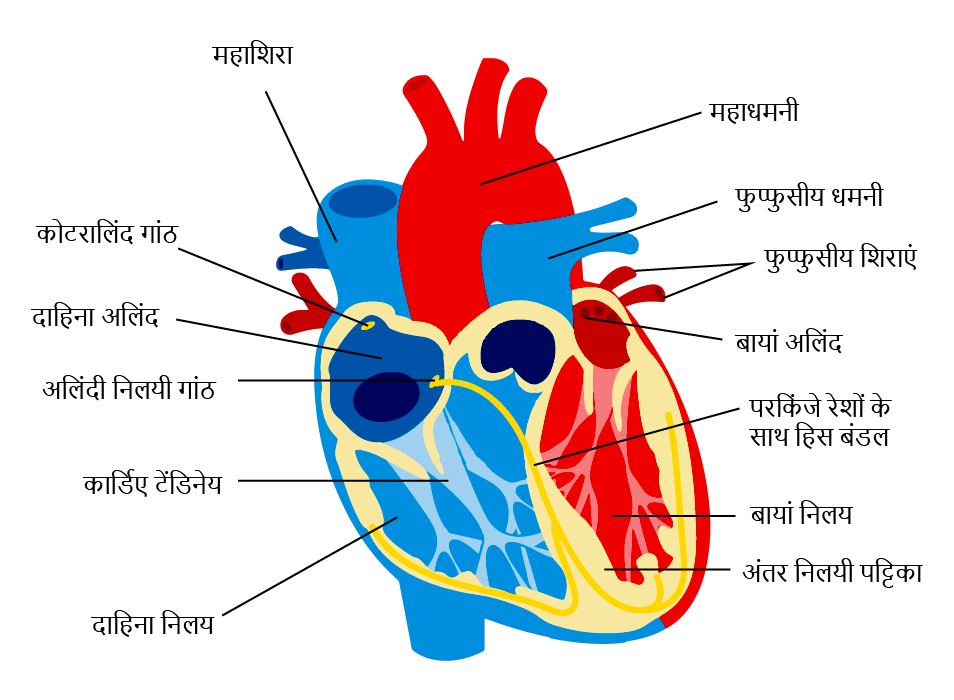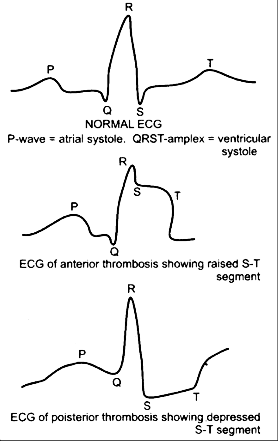NCERT Solutions For Class 11 Biology Chapter 18 Body Fluids And Circulation in Hindi - 2025-26
FAQs on NCERT Solutions For Class 11 Biology Chapter 18 Body Fluids And Circulation in Hindi - 2025-26
1. Where can I find accurate and step-by-step NCERT Solutions for Class 11 Biology, Chapter 18 (Body Fluids and Circulation)?
You can find reliable and expertly crafted NCERT Solutions for Class 11 Biology, Chapter 18 on Vedantu's website. These solutions provide a detailed, step-by-step methodology for every question in the textbook exercise, ensuring they are aligned with the latest CBSE 2025-26 syllabus and marking scheme.
2. How do the NCERT Solutions for Chapter 18 explain the process of blood coagulation?
The NCERT Solutions explain blood coagulation as a precise cascade mechanism. The correct method to answer this involves these key steps:
- Injury and Platelet Response: At the site of injury, platelets release certain factors that activate the coagulation process.
- Enzyme Cascade: A series of linked enzymatic reactions, known as a cascade process, involves multiple clotting factors.
- Prothrombin to Thrombin: This cascade leads to the formation of the enzyme complex, thrombokinase, which converts the inactive prothrombin in the plasma into active thrombin.
- Fibrinogen to Fibrin: Thrombin then acts as an enzyme to convert inactive fibrinogen into insoluble fibrin threads.
- Clot Formation: The fibrin threads form a network that traps dead and damaged formed elements of the blood, creating a stable clot.
3. What is the correct method to describe the structure of the human heart as per the NCERT exercises?
To correctly describe the human heart according to the NCERT pattern, your answer should be structured to cover the following points systematically:
- Pericardium: Start by mentioning the protective double-walled membranous bag, the pericardium, enclosing the pericardial fluid.
- Chambers: Describe the four chambers – the two relatively small upper chambers called atria and the two larger lower chambers called ventricles.
- Septa: Explain the role of the inter-atrial and inter-ventricular septa in separating the chambers and preventing the mixing of oxygenated and deoxygenated blood.
- Valves: Detail the valves, including the tricuspid valve (between the right atrium and ventricle), the bicuspid or mitral valve (between the left atrium and ventricle), and the semilunar valves (at the opening of the pulmonary artery and aorta).
- Major Blood Vessels: Mention the major vessels connected to the heart, such as the vena cava, pulmonary artery, pulmonary veins, and the aorta.
4. How should I solve the NCERT question that asks to explain the cardiac cycle?
The NCERT Solutions guide you to explain the cardiac cycle in a sequential manner. Your solution should include: a definition of the cardiac cycle as the sequential events in the heart which are cyclically repeated. Then, describe the three main phases:
- Joint Diastole: All four chambers are in a relaxed state. Blood from the pulmonary veins and vena cava flows into the left and right atria, respectively, and then into the ventricles.
- Atrial Systole: The atria contract, pushing the remaining blood into the ventricles.
- Ventricular Systole: The ventricles contract, causing the atrioventricular valves to close and the semilunar valves to open, forcing blood into the pulmonary artery and aorta.
5. What are the key differences between an open and closed circulatory system highlighted in the NCERT Solutions?
The NCERT solutions for Class 11 Biology emphasize structuring this answer using a comparative approach. The key differences are:
- Blood Vessels: In a closed system, blood is confined within arteries, veins, and capillaries. In an open system, blood is pumped by the heart into open spaces or cavities called sinuses.
- Blood Flow: Flow is rapid and can be precisely regulated in a closed system, whereas it is slow and unregulated in an open system.
- Contact with Tissues: In a closed system, tissues are not in direct contact with blood. In an open system, tissues are directly bathed in blood.
- Efficiency: A closed system is more efficient at transporting substances quickly over long distances, making it suitable for larger, more active animals like vertebrates. An open system is less efficient and found in arthropods and molluscs.
6. Why is it important to follow the stepwise method in the NCERT solutions when explaining double circulation?
Following the stepwise method is crucial because double circulation involves two distinct pathways. A step-by-step explanation ensures you clearly differentiate between the pulmonary circulation (heart to lungs and back) and the systemic circulation (heart to the rest of the body and back). This structured approach prevents confusion, demonstrates a thorough understanding of how oxygenated and deoxygenated blood are kept separate, and ensures you cover all key aspects required for full marks as per the CBSE evaluation criteria.
7. How do the Vedantu NCERT Solutions help in correctly interpreting a standard ECG graph for a textbook problem?
The Vedantu NCERT Solutions assist in interpreting an ECG by breaking down its components and linking them to specific cardiac events, which is the correct problem-solving method. The solutions explain that:
- The P-wave represents the electrical excitation (or depolarisation) of the atria, leading to atrial contraction.
- The QRS complex represents the depolarisation of the ventricles, which initiates ventricular contraction (systole).
- The T-wave represents the return of the ventricles from an excited to a normal state (repolarisation), marking the end of systole.
8. Beyond just listing components, how do the NCERT Solutions explain the functional significance of formed elements for answering textbook questions?
The NCERT Solutions go beyond simple definitions to explain the 'how' and 'why' of each formed element's function, which is essential for comprehensive answers. For instance, they clarify that:
- Erythrocytes (RBCs) are not just 'red cells' but are crucial for O₂ transport due to the presence of haemoglobin. Their biconcave shape increases surface area for diffusion.
- Leucocytes (WBCs) are explained as key players in the immune system, with different types (neutrophils, lymphocytes, etc.) having specialised roles like phagocytosis or antibody production.
- Platelets (Thrombocytes) are described as cell fragments vital for initiating blood coagulation by forming a plug and releasing clotting factors.
9. The NCERT solutions differentiate between systole and diastole. How does this help in solving problems related to blood pressure?
Understanding the distinction between systole and diastole is fundamental to solving problems on blood pressure. The solutions clarify that systole is the contraction phase of the heart chambers, while diastole is the relaxation phase. This directly relates to blood pressure measurement:
- Systolic pressure is the peak pressure in the arteries during ventricular contraction (systole).
- Diastolic pressure is the minimum pressure in the arteries during ventricular relaxation (diastole).
10. How can I use the NCERT solutions to effectively compare the structure of arteries and veins for a textbook question?
The NCERT solutions provide the key comparative points needed to structure a high-quality answer. To effectively compare arteries and veins, the solutions guide you to focus on:
- Wall Thickness: Arteries have a thick, elastic middle layer (tunica media) to withstand high pressure, while veins have a thinner one.
- Lumen: The lumen (internal cavity) of an artery is narrower than that of a corresponding vein.
- Valves: Veins have valves to prevent the backflow of blood, especially in the limbs, whereas arteries do not.
- Blood Flow: Arteries carry oxygenated blood away from the heart (except the pulmonary artery), while veins carry deoxygenated blood towards the heart (except the pulmonary veins).





























